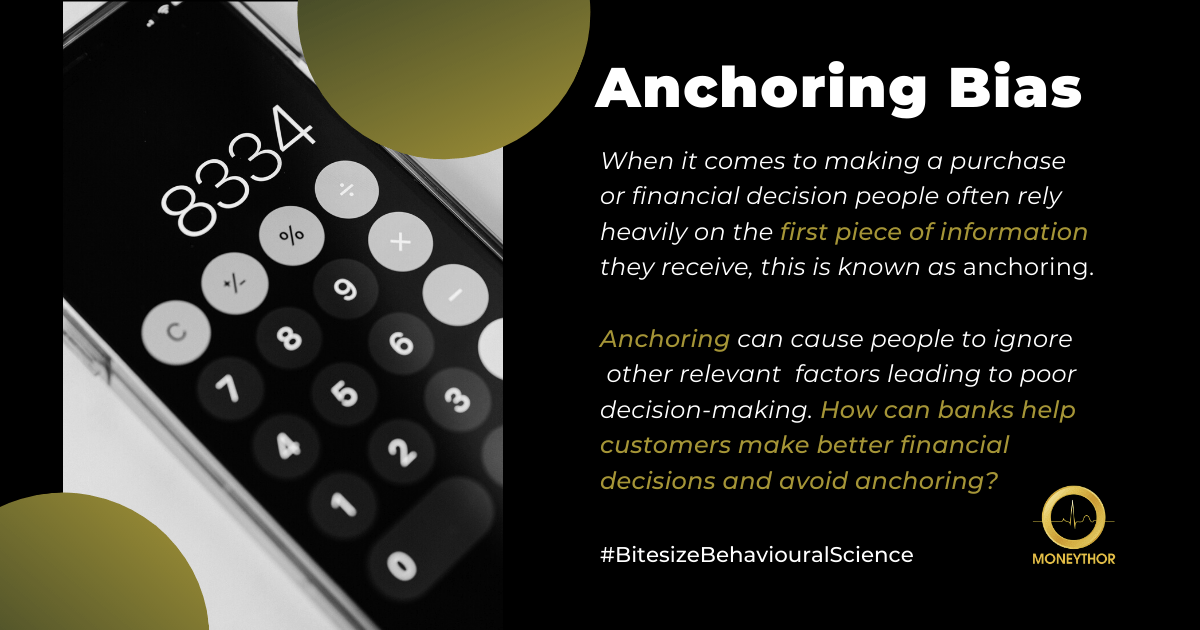When it comes to making a purchase or financial decision people often use an anchor, base number or the first piece of information they receive as a reference or starting point. While using these anchors may seem like a logical way to make a decision, people have a tendency to rely too heavily on them, which can greatly influence the final decision they make. This is known as anchoring.
What is anchoring?
“Anchoring is a particular form of priming effect whereby initial exposure to a number serves as a reference point and influences subsequent judgments.”
We know that individuals are influenced by the first piece of information or number that they come across and once this anchor is rooted, they will make future decisions based on that. The problem with this is that it can cause people to overspend, undersave and struggle in negotiations which can have negative implications for people’s financial lives.
Consider this example: an individual is told by a colleague that they paid $400,000 on their first home. Subsequently the individual now thinks that $400,000 is the standard amount to pay for a home, any less is cheap and any more is expensive. What the individual forgets to consider is factors like what they can or cannot afford, location and market trends, and instead uses this number as their benchmark for what they should pay for their first home.
Anchoring, while irrational, is a common tool used by people to make financial decisions, but not always the best financial decisions. How can banks help their customers to counteract the negative impacts of anchoring?
Expense Management
Anchoring is a tool that is often used in marketing and product management to make consumers spend more on a product or service. This can lead people to spend outside of their budget rather than make a purchase that then can afford.
Banks can provide tools such as digital affordability checkers within a bank’s app or chatbot, that are based on an individual’s previous transactions and balances to calculate what the individual can afford rather than what they think is the right amount to spend. This can reduce the likelihood of overspending and running into financial difficulty.
Education
Another important thing to consider is that one of the key reasons people anchor to numbers or facts that may be overpriced or incorrect is due to the fact that they don’t know a better way to make a sound financial decision. It is a lack of education or experience making a particular financial decision that leads an individual to stick with an anchor figure or fact. Banks can help their customers by providing financial literacy advice and educational content that shows them how much things should cost e.g. electricity bills and how much they should be spending.
Savings
The third way that banks can positively apply anchoring bias is by encouraging their customers to save more. Suggesting amounts or figures to pay and highlighting a default amount is standard practice of anchoring that is usually used to encourage increased spending. However, what if banks use this practice not to encourage spending but rather to encourage increased savings? For example, a bank could suggest to their customer that they can afford to save more and provide three options for saving with the middle amount set as the default. This can encourage customers to add more to their regular savings and potentially reach their financial goals sooner.
Anchoring happens often and is a simple but irrational way to estimate the cost or value of things or services. It is not something that can be easily avoided, but by understanding the influence that it has on customers and implementing nudges, content or recommendations that counteract the impact of anchoring, banks can help their customers make optimum financial decisions that improve their financial well-being and help them to achieve their financial goals.

